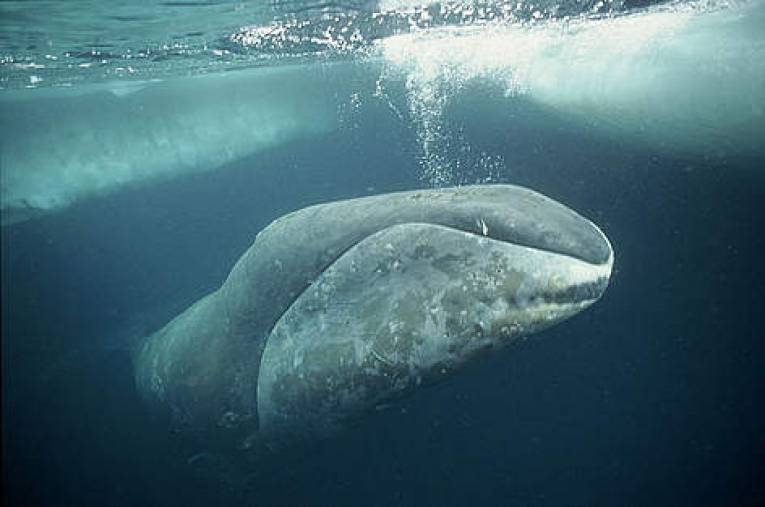If there is an animal that deserves some human kindness, it is this. This remarkable creature of the Arctic was the “common whale” to our ancestors. They never realised that its unmatched gape and its giant curving upper jaw belied a status that we are only just realising.
The bowhead breaks records by being capable of living for at least 150 years. It filters its planktonic prey by moving continuously forward like a basking shark, while most baleen whales hunt shoals of prey. Almost tame when approached and slow moving, it floated when whalers killed it, so while the right whale was “correct”, the bowhead was plain “easy.” After 1611, European whalers had discovered a spot to anchor near Spitzbergen for the whole whaling season, where they could simply wait for the whales to appear. They wiped out a very large population in a few decades.
The bowhead populations of Greenland and then Baffin Bay trace the whalers’ progress as they caused a disappearance from our history. From an estimated original population of 50,000, current estimates only extend to a maximum of 50% of that, split into groups and sub-populations, with little inter-breeding.
Nowadays, only one group of the five dispersed populations has any increase in numbers occurring. In Svalbad, the bowhead whale is in great danger, classified as critically endangered. The Sea of Okhotsk and Baffin Bay groups have barely recovered from whaling days at all, while Hudson Bay and the North Pacific stock do show signs of some recovery.
The thickset body weighs in heavy at a max. of 110,000kg (122tons), with the thickest blubber known. It is not much longer than 20m (66ft), with the calf born at 4m. There are usually twins, so at least the population can double, when they do breed ! The head takes up 40% of that length, with thick lips and a finless back. Throat grooves are seemingly not necessary for its special feeding method. It’s a velvety black colour with a chin coloration resembling a white moustache when it looks up to see who or what is approaching.
Another behavioural oddity is its predilection for following the unicorn whale. Who could now discover how significant such behaviour could be? Or maybe they just eat the same copepod! That massive head is there too for a reason. Living throughout the year in the Arctic, these animals need to break through the ice to breathe.
The bowhead is classified as a right whale despite its unique feeding modifications. It travels in small herds of about five individuals. And sings like the right whales, meaning mating songs are likely, even though the species is hardly studied in that respect. As far as predation is concerned, they suffer much less from orcas than some whales, but human depredations could still see us losing them. There are many whales we never see because of cryptic habits.
We destroyed this one, almost to the limit. Perhaps if we study the bowhead a little more, and its scout, the unicorn whale, we can discover there are common whales we never see. The Fraser’s (Short-snout) Dolphin is a case in point. Known only from a 1955 skeleton, it was thought the rarest whale. With schools of 500 now spotted, it’s apparently common, so there’s hope for human lack of senses (comparatively) yet.
Classification:










